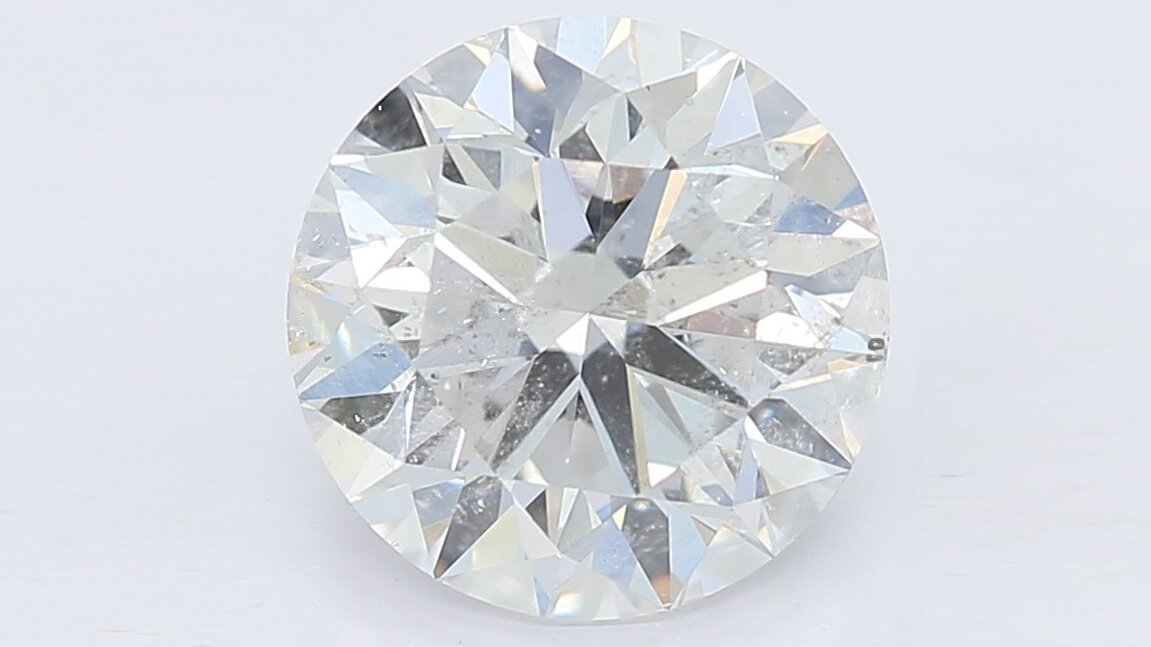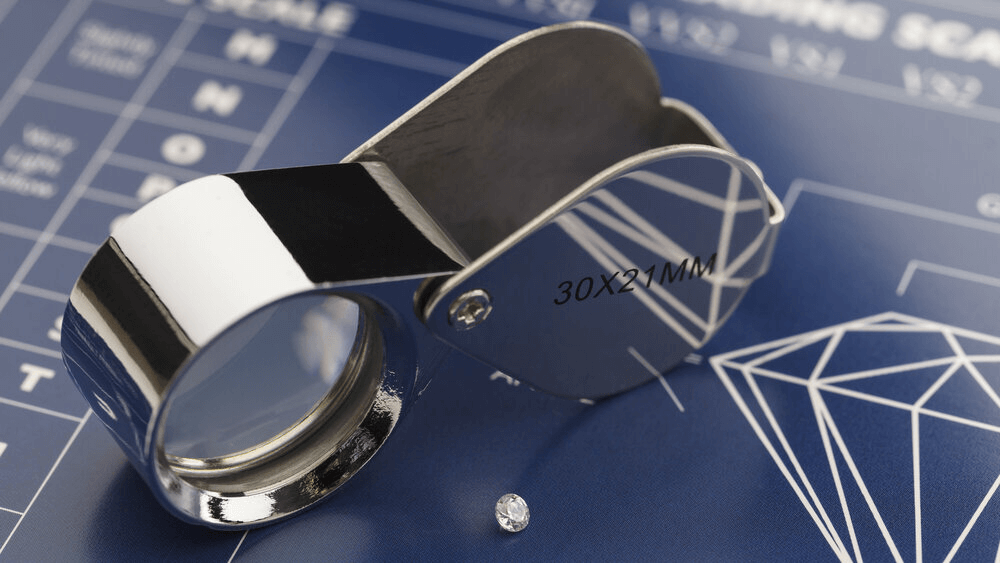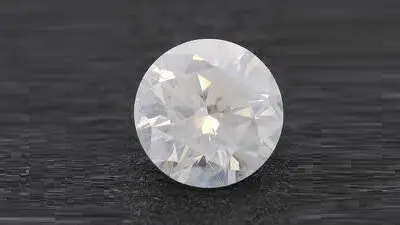The Dark Side of SI3 Diamonds Exposed

By Gary A.

Edited by Olivia H.
Published Apr 28, 2021
Edited on Mar 31, 2025
For those searching for a balance between beauty and affordability, an SI3 diamond may seem tempting, but understanding its unique clarity grade is key to making the right decision.

Navigate This Guide:
- 6 Quick Tips for Buying a Diamond Engagement Ring and Examining Clarity, Especially SI3 Diamonds
- Introduction to SI3 Diamond Clarity
- SI3 vs Traditional Clarity Grades
- Assessing Quality and SI3 Diamond Price
- Our Expert Take
- 9 FAQs
Before we dive deeper into the specifics, here are some practical tips to help guide your decision-making process:
6 Quick Tips for Buying a Diamond Engagement Ring and Examining Clarity, Especially SI3 Diamonds
- Tip 1: Understanding SI3 Clarity Grade Research SI3 Clarity: Educate yourself on what an SI3 clarity grade means. Unlike other grades, SI3 is not recognized by GIA but is used by some other labs. This grade often falls between SI2 and I1, indicating noticeable inclusions that might affect the diamond’s appearance.
- Tip 2: Compare SI3 with Other Clarity Grades Comparison with SI1,SI2 and I1 Grades: Compare SI3 diamonds with SI1 ,SI2 AND I1 graded stones to see the difference in inclusions. This can help you understand whether the SI3 graded diamond has been overrated in terms of clarity.
- Tip 3: Inspect the Diamond Under Different Lighting Conditions Examine Under Various Lights: Look at the diamond under multiple lighting conditions. Inclusions in SI3 diamonds can be more visible under certain lights. A well-lit environment and sunlight can reveal inclusions and flaws not seen under store lighting.
- Tip 3: Request High-Resolution Images and Videos Ask for Detailed Visuals: If buying online, request high-resolution images or videos of the diamond. This will allow you to inspect the clarity and spot any visible inclusions that might be present in an SI3 clarity diamond.
- Tip 4: Pay Attention to the Diamond’s Size and Shape Size and Shape Consideration: The size and shape of a diamond can impact how inclusions are seen. Larger diamonds or certain shapes like emeralds and asschers can make inclusions more visible, which is crucial for SI3 diamonds.
- Tip 5: Be Aware of the Impact of Inclusions on Brilliance Inclusions vs. Brilliance: Understand how inclusions in an SI3 diamond can impact its brilliance and sparkle. Inclusions can obstruct the light patterns inside the diamond, reducing its overall brilliance.
- Tip 6: Know the Return and Warranty Policies Check Return Policies: Ensure you are aware of the return and warranty policies when purchasing an SI3 diamond. Given the potential for overestimated quality, having a safety net is important in case the diamond doesn’t meet your expectations after a thorough inspection.
Now that you’ve got these practical tips, use Jeweler AI below to find the perfect engagement ring that suits your style and budget:
Introduction to SI3 Diamond Clarity
If you’ve been brushing up on the Diamond Clarity Scale recently, then we’re about to throw you a definitive curveball with this one: the SI3 diamond.
While nowhere near as common as other grades for diamond clarity, this one may occasionally appear on your radar as you continue researching for your ‘sweet spot’ in the world of diamond clarity.
The good news is, you don’t need to do any mental gymnastics to find a place for SI3 diamonds while you ruminate over which stone to invest in – here’s why.
Defining SI3 Clarity
An SI3 diamond is a diamond that has been graded with an SI3 clarity, which is a subcategory of the SI clarity range created by the EGL lab in the 1990s.
By far the most widely used method for ascertaining clarity is the GIA Clarity Scale, which, as you probably know by now, features only two subcategories for slightly included diamonds: SI1 and SI2. This was devised way back in the early 1940s and remains the most reliable system for identifying inclusions and blemishes in any diamond.
Still, some parts of the diamond industry have adopted SI3 diamond clarity which, on the EGL scale, sits between the SI2 and I1 grades. It is meant to help differentiate between the better Si2 diamonds from other diamonds with slightly more inclusions, and slightly less value for fine jewelry.
It is important to note that the SI3 grade isn’t accepted by everyone in the diamond industry and, as a result, won’t come up anywhere near as often as SI2 and I1 diamonds.
The Controversy Surrounding SI3 Clarity
An SI3 clarity grade is so controversial because it’s not accepted by most grading scales. It is not an accepted GIA or AGS grade, which are the most widely approved and acknowledged scales. Instead, EGL, or the European Gemological Laboratory, is not quite as respected in the industry.
The key argument behind introducing an SI3 grade was this: some SI grade diamonds are eye clean, while others also graded at SI have visible inclusions impacting the beauty of the stone. So, the main debate with an SI3 grade is that it creates the space for gemologists to differentiate between a diamond that has inclusions visible to the naked eye, and one that, while still significantly included, appears eye clean.
That being said, a diamond graded as I1 and I2 will usually have flaws that are visible. If you were to bring an EGL-graded SI3 diamond to GIA, the diamond would most likely be graded worse by the GIA.
This is why the grade is so controversial: it can be misleading for inexperienced shoppers if a diamond worthy of the lowest clarity grade is labeled according to a grade that can, in many instances, produce eye-clean diamonds.
SI3 vs Traditional Clarity Grades
To understand what an SI3 diamond is, it’s important to make sure you’re totally confident in using the most reputable scale used for evaluating a diamond’s clarity – the GIA grading scale.
Diamonds are graded on their 4 C’s: color, cut, carat and clarity on the GIA scale. The clarity of a diamond is graded on its visual appearance and how many inclusions or blemishes it has. A diamond’s clarity can affect its value and overall price and is graded on a scale from Internally Flawless (IF) to Inclusions 2 (I2). Eye clean diamonds are included within the clarity spectrum and can be found in various grades, such as SI1 or VS2 diamonds.
The diamond clarity scale for GIA contains the following grades:
Internally Flawless (IF)
Very Very Small Inclusions 1 (VVS1)
Very Very Small Inclusions 2 (VVS2)
Very Small Inclusions 1 (VS1)
Very Small Inclusions 2 (VS2)
Small Inclusions 1 (SI1)
Small Inclusions 2 (SI2)
Inclusions 1 (I1)
Inclusions 2 (I2)
Comparing SI3 DIamond Quality to SI1 and SI2: Understanding the Grading Differences
A diamond that the GIA would consider to be too included to receive an SI1 or SI2 grade will receive a grade of I1 or I2. So, from that, we can surmise that an SI3 diamond is comparable to an I1 or I2 diamond graded by the GIA.
An SI3 diamond rating sounds better than an I1, and that means there’s a risk these diamonds will be priced higher than they should be.
If you’re looking for eye clean diamonds at the most affordable price possible, then focus your search on a clarity grade no lower than SI2, since, in smaller diamonds, this category can often yield plenty of choice for eye clean stones.
These types of diamonds are most often eye-clean diamonds with no blemishes or inclusions seen by the naked eye. Both are a better choice for value and price and, since they’ve been graded according to the higher standards of the GIA, a wiser investment.
Remember that eye cleanliness is always key to picking a good diamond and that, given the fact that SI3 is, in most cases, equal to I1, then these diamonds are incredibly unlikely to appear eye clean – particularly if they are large enough to take center stage in your engagement ring.
The Role of EGL in SI3 Diamond Rating
The EGL is the primary force behind the SI3 diamond rating. Their argument is that the I1 grade is too broad and that there is too much difference between one I1 diamond and another as a result. Whether or not this is true, it seems risky to give some of those diamonds – which, in order to earn the I1 grade in the first place, are heavily included – a grade that sounds better than it is.
In other words, if the EGL wanted to add additional clarity grades to the scale, an extra I3 grade would be better. In fact, I3 is a clarity grade recognised by some labs, and you can read more about it here.
The True Value of SI3 Diamond Quality
Each clarity grade commands its own price range. If you were to look at a collection of diamonds identical in every way except clarity, then you’d see the costs going down with that grade – and taking a pretty sharp downturn when you reached the first diamond that was not eye clean.
What does this mean? A diamond given a clarity grading of I1 by the GIA will be cheaper than a diamond graded SI2. If that same diamond is graded SI3 by the EGL, it will command a higher price – simply because it remains in that higher category.

Assessing Quality and SI3 Diamond Price
Most diamonds graded lower than SI (Small Inclusions) are less desirable, which means that a weakly graded EGL diamond, such as the SI3 grade, can bring lots of confusion.
I1 diamonds are, in the majority of cases, not eye clean; they feature inclusions significant enough to impact the beauty of the diamond and, as a result, make them less desirable. Giving a diamond an SI3 grade (when, according to a trusted body like the GIA, it would actually be labelled as I2) can make that same diamond seem more appealing, particularly to someone with little knowledge or experience in this area.
Essentially, Si3 blurs the line between two totally different grades. As a result, most jewelers will advise you to avoid SI3 diamonds altogether, since the GIA remains the authority in this area.
But, even if you’re cognizant of the fact that SI3 diamond clarity is the same as I1 diamonds at heart – and you’re willing to accept those visible inclusions – should you go for it? Probably not. The EGL grades more than just clarity, which means that other aspects of the diamond may also be inferior – and worth less than their grades would have you believe.
Stick to GIA Reports, and put your faith in their long-established method for grading diamond quality and ensuring a fair price for shoppers with little to no experience in this arena.
Our Expert Take
The GIA is the only diamond certification we recommend our customers consider. The EGL may have pioneered a new clarity grade but, for anyone looking to purchase an eye clean diamond at a reasonable price, it’s totally unnecessary.
Opting for an SI3 diamond rating means sacrificing the reassurance of a GIA report, and potentially over-spending on a poorer quality diamond. SI3 diamond value will always be higher than it should be, just because it sounds more appealing.
If you’re looking for a better choice, then browse for Si1 or SI2 diamonds. Both are better choices for value and price, and are widely available from reputable sellers who embrace the more stringent approach made by the Gemological Institute of America.
9 FAQs
- Q: What is an SI3 Diamond Clarity?
- A: SI3 diamond clarity is a grade assigned by some gemological labs, positioned between SI2 and I1. It indicates noticeable inclusions that may affect the diamond’s appearance.
- Q: Is SI3 Diamond Clarity Recognized by GIA?
- A: No, the Gemological Institute of America (GIA) does not recognize SI3 as a valid clarity grade. It’s a classification used by some other labs, notably EGL.
- Q: Are SI3 Diamonds Worth Buying?
- A: The value of SI3 diamonds can be subjective. They are typically less expensive than higher clarity grades but often have visible inclusions. It’s essential to assess each diamond individually for quality.
- Q: How Does SI3 Clarity Affect a Diamond’s Appearance?
- A: SI3 clarity diamonds may have inclusions visible to the naked eye, which can affect the stone’s brilliance and overall aesthetic appeal.
- Q: Can SI3 Diamonds Be Eye-Clean?
- A: It’s rare for SI3 diamonds to be completely eye-clean. The inclusions in these diamonds are usually visible without magnification.
- Q: How Do SI3 Diamonds Compare to SI1 and SI2?
- A: SI3 diamonds typically have more and larger inclusions than SI1 and SI2 diamonds. They are closer in quality to I1 diamonds.
- Q: Should I Consider SI3 Diamonds for an Engagement Ring?
- A: It depends on personal preferences and budget. If visible inclusions are a concern, you might want to consider higher clarity grades.
- Q: Is There a Big Price Difference Between SI3 and Higher Clarity Grades?
- A: Yes, SI3 diamonds are generally less expensive than diamonds with higher clarity grades like SI1 and SI2.
- Q: What Should I Look for When Buying an SI3 Diamond?
- A: Focus on the diamond’s overall appearance, inspect it under various lighting, and consider getting a professional evaluation for an unbiased opinion.
FOLLOW-UP GUIDE SERIES





















